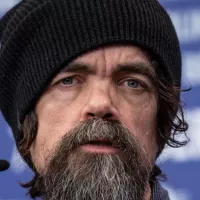1813
Early European exploration of inland Australia was sporadic. More focus was on the more accessible and fertile coastal areas. The first party to successfully cross the Blue Mountains just outside Sydney was led by Gregory Blaxland in 1813, 25 years after the colony was established. People, starting with John Oxley in 1817, 1818 and 1821, followed by Charles Sturt from 1829 to 1830, attempted to follow the westward-flowing rivers to find an "inland sea", but these were found to all flow into the Murray River and Darling River, which turn south.
1860
Over the period 1858 to 1861, John McDouall Stuart led six expeditions north from Adelaide, South Australia into the Outback, culminating in successfully reaching the north coast of Australia and returning without the loss of any of the party's members' lives. This contrasts with the ill-fated Burke and Wills expedition in 1860–61 which was much better funded, but resulted in the deaths of three of the members of the transcontinental party.
1865
In 1865, the surveyor George Goyder, using changes in vegetation patterns, mapped a line in South Australia, north of which he considered rainfall to be too unreliable to support agriculture.
1869
The term "outback" derives from the adverbial phrase referring to the backyard of a house, and came to be used meiotically in the late 1800s to describe the vast sparsely settled regions of Australia behind the cities and towns. The earliest known use of the term in this context in print was in 1869, when the writer clearly meant the area west of Wagga Wagga, New South Wales. Over time, the adverbial use of the phrase was replaced with the present day noun form.
1928
The Royal Flying Doctor Service (RFDS) started service in 1928 and helps people who live in the outback of Australia. Previously, serious injuries or illnesses often meant death owing to the lack of proper medical facilities and trained personnel.
1994
Riversleigh, in Queensland, is one of Australia's most renowned fossil sites and was recorded as a World Heritage site in 1994. The 100 km (39 sq mi) area contains fossil remains of ancient mammals, birds and reptiles of Oligocene and Miocene age.
1996
The total population of the Outback in Australia declined from 700,000 in 1996 to 690,000 in 2006. The largest decline was in the Outback Northern Territory, while the Kimberley and Pilbara showed population increases during the same period. The sex ratio is 1040 males for 1000 females and 17% of the total population is indigenous.
2004
In Western Australia the Argyle diamond mine in the Kimberley was once the world's biggest producer of natural diamonds and contributed approximately one-third of the world's natural supply, but was closed down in 2020 due to financial reasons. The Pilbara region's economy is dominated by mining and petroleum industries. The Pilbara's oil and gas industry is the region's largest export industry, earning $5.0 billion in 2004/05 and accounting for over 96% of the state's production. Most of Australia's iron ore is also mined in the Pilbara and it also has one of the world's major manganese mines.
2006
2002 was declared the Year of the Outback. While the early explorers used horses to cross the Outback, the first woman to make the journey riding a horse was Anna Hingley, who rode from Broome to Cairns in 2006.
2009
Geographically, the Outback is unified by a combination of factors, most notably a low human population density, a largely intact natural environment and, in many places, low-intensity land uses, such as pastoralism (livestock grazing) in which production is reliant on the natural environment. The Outback is deeply ingrained in Australian heritage, history and folklore. In Australian art the subject of the Outback has been vogue, particularly in the 1940s. In 2009, as part of the Q150 celebrations, the Queensland Outback was announced as one of the Q150 Icons of Queensland for its role as a "natural attraction".
2014
Capitalising on the lack of pasture improvement and absence of fertiliser and pesticide use, many Outback pastoral properties are certified as organic livestock producers. In 2014, 17,000,000 hectares (42,000,000 acres), most of which is in Outback Australia, was fully certified as organic farm production, making Australia the largest certified organic production area in the world.
Trending

2 months ago Brendan Fraser Credits 'Rental Family' for Helping Him Overcome Insecurities, Finds Self-Worth

2 hours ago Ray J criticizes Jay-Z and Beyonce for allegedly ignoring Brandy on tour.

2 hours ago Roofman streaming premiere: Tatum, Dunst discuss nude scene, streaming details revealed.

2 hours ago John Cena's Potential Retirement Sparks Debate: Father's Concerns, Gunther's Role, and Dream Opponents
2 hours ago Druski's comedy: Viral video, 'hatfishing' skit, and hosting Billboard 2025 livestream.

2 hours ago Amanda Gorman Named UNICEF Ambassador, Discusses 'Zootopia 2' and Olympic Aspirations.
Popular
Aftyn Alyssa Behn is an American politician currently serving as...
Matt and Ross Duffer known as the Duffer Brothers are...

Lane Kiffin is an American football coach currently serving as...

XXXTentacion born Jahseh Dwayne Ricardo Onfroy was a controversial yet...

Stranger Things created by the Duffer Brothers is a popular...

William Franklin Graham III commonly known as Franklin Graham is...